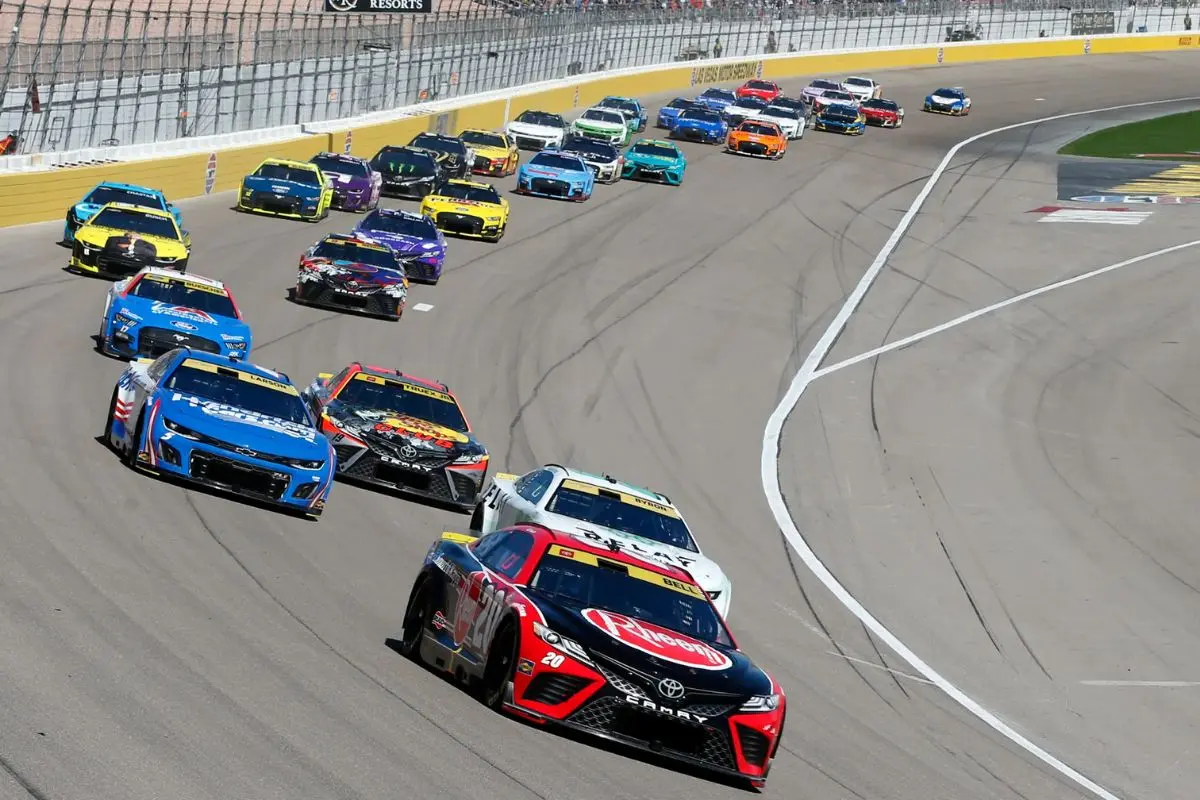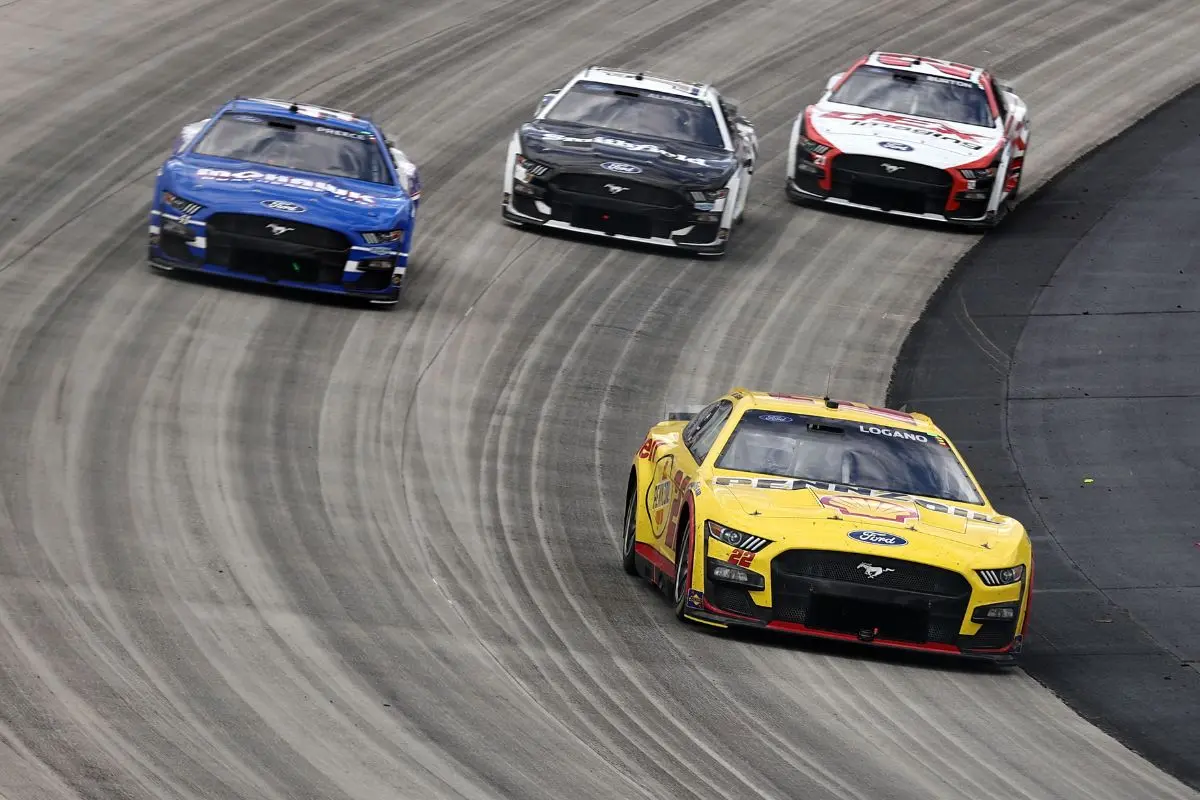Tony Stewart’s Near-Fatal Crash: Tony Stewart’s recollection of his life-threatening crash during the 2001 Daytona 500 is forever intertwined with the devastating loss of Dale Earnhardt Sr., a towering figure in NASCAR. Stewart’s No. 20 Pontiac flipped in a terrifying wreck, leaving him with only minor injuries, yet his ordeal was soon eclipsed by Earnhardt’s tragic last-lap accident. This moment highlighted the inherent dangers of motorsport and initiated a profound transformation in NASCAR’s approach to safety. The emotional weight of sharing medical space with Earnhardt reinforced the fragility of life in racing, illustrating an urgent need for change.
Key Highlights
- Tony Stewart was involved in a severe crash during the 2001 Daytona 500, resulting in his car flipping and crashing onto the infield.
- Despite the crash’s severity, Stewart sustained only minor injuries, leading to a deepened appreciation for driver safety and camaraderie.
- Stewart’s crash was overshadowed by Dale Earnhardt’s tragic death on the same day, intertwining their fates and the emotional aftermath.
- The incident highlighted the inherent dangers of racing and emphasized the importance of advanced driver safety gear and protocols.
- Stewart’s experience became part of broader discussions on safety improvements, following the tragedy that claimed Earnhardt’s life.
Tragic 2001 Daytona 500
The 2001 Daytona 500 remains etched in NASCAR history as a day of profound tragedy and loss. This fateful race will forever be remembered for the heartbreaking last-lap accident that claimed the life of Dale Earnhardt, an iconic figure who was not only a racing legend but also a symbol of resilience and tenacity in the sport.
His passing sent shockwaves throughout the racing community and among millions of fans worldwide, marking a solemn chapter in NASCAR’s storied history.
Earnhardt’s accident overshadowed another notable event earlier in the race—a massive 18-car pileup on Lap 173. Superspeedways like Daytona are notorious for such incidents, where the slightest miscalculation can have catastrophic consequences.
This particular incident was initiated when Ward Burton made contact with Robby Gordon, triggering a chain reaction that involved numerous competitors. The crash effectively halted the race, emphasizing the inherent dangers that these drivers face each time they step onto the track.
While the loss of Earnhardt dominated headlines, the earlier crash served as a striking reminder of the sport’s perilous nature. It highlighted the razor-thin line between competitive racing and calamity, a reality that every driver must confront.

Tony Stewart Remembers His Near-Death Experience
Reflecting on a moment that nearly altered his fate, Tony Stewart recounts the harrowing crash during the 2001 Daytona 500 that tested the limits of his resilience. As NASCAR races lacked many of the modern safety features, they posed considerable risks, as Stewart vividly experienced. Just before the tragic loss of Dale Earnhardt Sr., Stewart’s encounter with danger unfolded on the iconic track.
“Well, it’s not actually. Obviously this was 25 laps before welost a good buddy of ours with Dale Sr., but this was the crash that I was involved in where physically on the racetrack I was three wide but just enough ahead of the guys.” – (Stewart)
The incident began as Stewart navigated the chaos of the lead pack, his No. 20 Pontiac caught in the incident when Ward Burton and Robby Gordon collided. This triggered a sequence of events that sent Stewart’s car into the wall, lifting it airborne in a gut-wrenching barrel roll.
At the time this happened, I was running third at the Daytona 500 and got turned into the wall, and air got underneath and picked up, and I landed on top of my teammate Bobby Labonte, who was running 23rd. I remember being in the infield and stopped and Bobby Labonte, with his head right here, goes, You alright? I’m like, Yeah, I’m fine.” – (Stewart)
Stewart’s vehicle ultimately landed atop teammate Bobby Labonte’s car, a demonstration of the perilous nature of the sport at the time. In the infield aftermath, Stewart recalled Labonte’s concern, his voice steady as he assured, “Yeah, I’m fine,” despite the gravity of the situation.
A Forgotten Crash in the 2001 Daytona 500
Amid the monumental events of the 2001 Daytona 500, Tony Stewart‘s crash remains a lesser-remembered episode, overshadowed by the tragic passing of Dale Earnhardt Sr. Stewart’s harrowing accident, though important, was eclipsed in collective memory due to the powerful impact of Earnhardt’s death on the NASCAR community and the broader motorsport community.
On that fateful day, as the race unfolded with its characteristic intensity, Stewart found himself involved in a terrifying multi-car wreck that had fans and fellow drivers holding their breath.
As the race progressed, a chain reaction led to Stewart’s car being launched into a violent series of flips, ultimately crashing onto the infield. The crash was a vivid reminder of the inherent perils of the sport, capturing the vulnerability of even the most skilled drivers. Despite the severity of the incident, Stewart emerged with minor injuries, a reflection of the resilience of the driver and the safety measures in place.
The emotional aftermath of Stewart’s crash was abruptly overshadowed by the tragedy that unfolded later in the race, as the NASCAR community grappled with the loss of one of its most iconic figures.
In the chaos that followed, Stewart and Earnhardt were transported to the same medical facility, an eerie intertwining of their fates on that day. While Stewart’s crash was an important event, it was largely relegated to the background, a footnote in the narrative of a day marked by profound loss and reflection within racing.

Stewart’s Realization of Dale Earnhardt’s Tragic Accident
Following the aftermath of his own crash, Tony Stewart‘s awareness of the broader tragedy that day unfolded under unexpected circumstances. As Stewart was transported to Halifax Medical Center in Daytona Beach, the severity of his ordeal was juxtaposed with an impending calamity that would soon overshadow personal concerns.
Unbeknownst to Stewart, Dale Earnhardt Sr., a legendary figure in NASCAR, had also been involved in a severe crash during the same race. Both drivers were brought to the same hospital, setting the stage for an unforeseen and poignant realization.
It was amidst the sterile surroundings of the hospital that Stewart encountered a moment of sobering clarity. In a logistical mishap, Stewart was inadvertently placed in the same room as Earnhardt, a brief yet indelible encounter that spoke volumes without uttering a word.
“So I had already been there; they had done all the scans on me, and they went to put me back in a room, and they had already put Dale in the same room. They accidentally put me in there, and I was only in there a second, but I knew when I saw Dale it wasn’t good.” – (Stewart)
Stewart later reflected on this moment, expressing an instinctual realization of the gravity of Earnhardt’s condition. “When they accidentally rolled me in the same room he was in,” Stewart recounted, “I was only in there a moment, but I knew when I saw Dale it wasn’t good.”
Did anyone else know this happened to Tony Stewart when he was in the hospital after he flipped during the 2001 Daytona 500? 😳😳😳
I think i heard this story before but i can't remember #NASCAR #SoundUp pic.twitter.com/ucUshI6lP4
— Ryan Ostrander 8 🏁 (@RyanOstrander_8) January 30, 2024
NASCAR’s Progress in Safety After Dale Sr.’s Death
In the aftermath of Dale Earnhardt Sr.’s tragic death, NASCAR underwent a groundbreaking expedition to improve safety measures across the sport. The fatal accident at the 2001 Daytona 500 not only marked the end of an era but also served as a critical moment, igniting a wave of safety advancements aimed at preventing future tragedies.
Since then, NASCAR has not experienced another fatality, a demonstration of the efficacy of these relentless efforts. Central to these advancements is the introduction of SAFER (Steel and Foam Energy Reduction) barriers, designed to absorb and reduce the impact force on drivers during collisions.
Complementing this innovation is the mandatory use of the HANS (Head and Neck Safety) device, which has become an indispensable component of driver safety gear. This device effectively minimizes the risk of head and neck injuries, providing essential protection during high-impact accidents.
Furthermore, NASCAR has invested in the continuous development of the racing car’s structural integrity, focusing on enhancing the cockpit’s resilience to withstand severe impacts. This initiative, coupled with rigorous safety protocols and driver training, emphasizes NASCAR’s steadfast commitment to safety.

News in Brief: Tony Stewart’s Near-Fatal Crash
The tragic events of the 2001 Daytona 500 serve as a poignant reminder of the inherent dangers in motorsport. Tony Stewart’s near-fatal crash, overshadowed by Dale Earnhardt’s untimely death, emphasizes the urgency for improved safety measures.
Earnhardt’s legacy prompted NASCAR to implement substantial advancements in driver protection, illustrating the sport’s commitment to preventing future tragedies. The profound impact of these events continues to resonate, highlighting the delicate balance between the thrill of racing and the imperative of safety.
ALSO READ: Tony Stewart’s Departure Unleashes Intense NASCAR Rivalry Among Emerging Powerhouses


